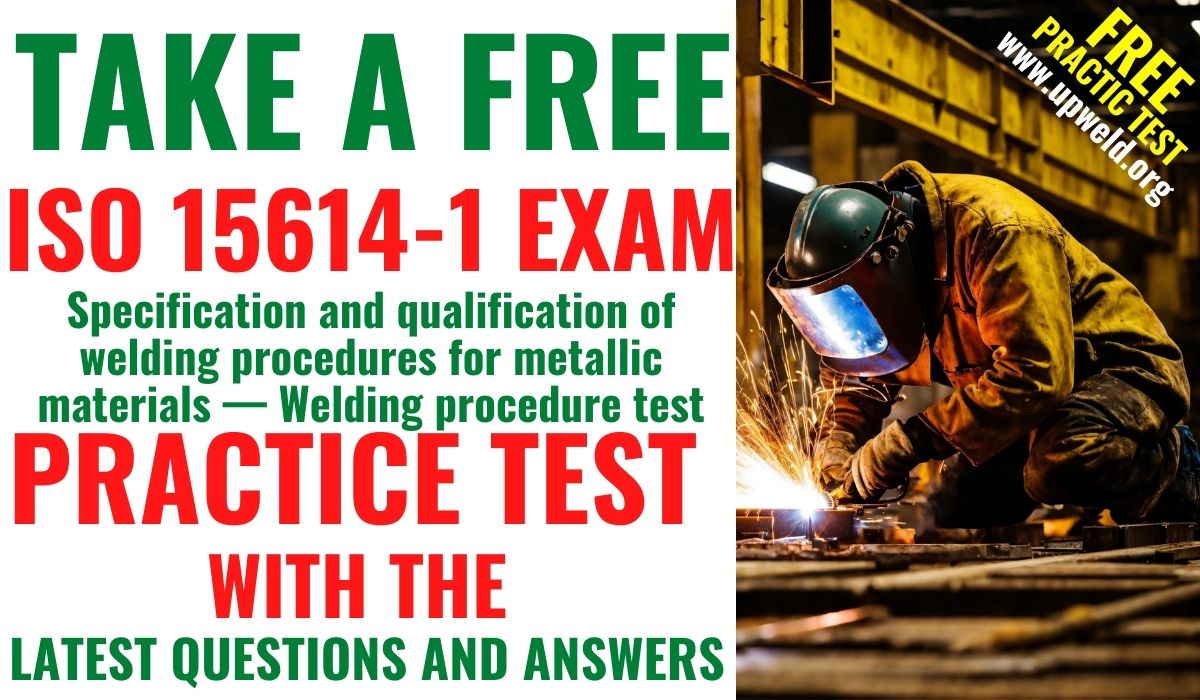Here You can Take free ISO 15614-1 Practice Test with Latest ISO 15614-1 Questions and Answers

Are You Ready? Discover the Top ISO 15614-1 Questions That Will Define your WPS Exam Success!
Here, you can take a free ISO 15614-1 practice test featuring the latest questions and answers to boost your WPS exam score instantly (BS EN ISO 15614-1:2017 Specification and Qualification of Welding Procedures for Metallic Materials — Welding Procedure Test).
This free ISO 15614-1 Quiz Course will also be helpful for your CSWIP 3.1 – WPS Exam.
To download a free PDF of ISO 15614-1 questions and answers, complete the quiz first. After finishing, you can copy all the questions and answers and paste them into MS Word to create your PDF file.
Take free CSWIP 3.1 Exam Practice Test With the Latest Questions and answers
If you have any questions, please provide your feedback in the comment section.